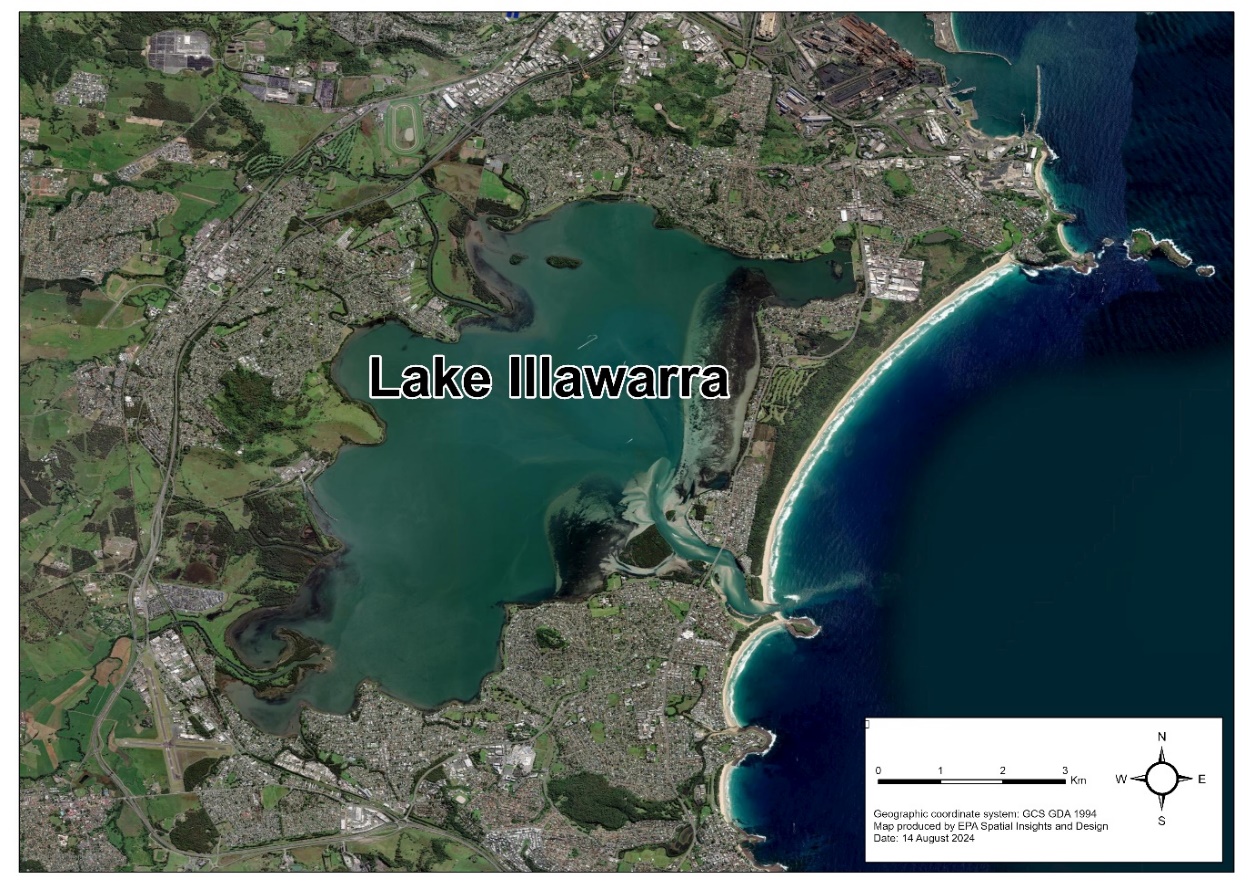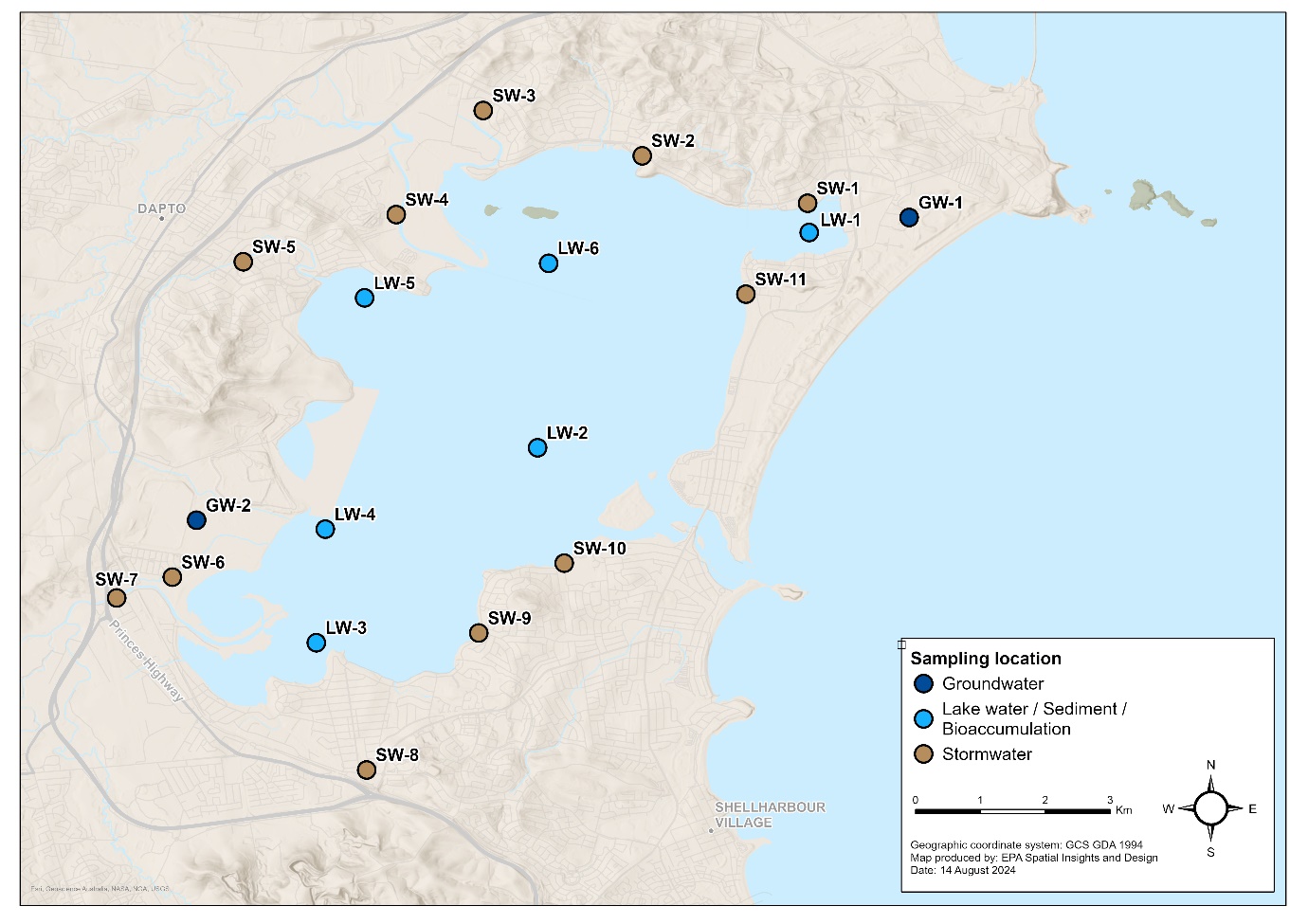Lake Illawarra snap-shot contamination assessment
In January and February 2024, the EPA and the NSW Department of Climate Change, Energy, the Environment and Water (DCCEEW) undertook a snap-shot, single point in time, assessment of the Lake Illawarra catchment.
The objective of this study was to determine if the waterway has been contaminated by any industrial, agricultural or residential activities in the area, and to determine if any immediate action needed to be undertaken in response. At the time of the study, contaminants in the waterway were all at acceptable levels compared to relevant guideline values.
Lake Illawarra is located 80 km south of Sydney and 10 km south of Wollongong City. The lake has recreational values for the local community, spiritual and cultural values for the Aboriginal community, and is a delicate ecosystem for marine life. Land use in the Lake Illawarra catchment includes agriculture, industry and urban development. All of these activities can result in contamination of the lake and its catchment.

Testing approach
In January and February 2024, lake water, lake sediments and stormwater were collected from Lake Illawarra and its tributaries. Groundwater was also collected from the catchment. The water samples were analysed for common agricultural, urban and medium to heavy industry pollutants (pesticides, metals and microplastics). The results were all compared to the Australian and New Zealand Guidelines for Fresh and Marine Water Quality 2018.
The project also assessed whether any pollutants in the water had the potential to be taken up by marine life. This was achieved using a device called a “passive sampler”, which provides an indicative measure of what fish and other marine life are exposed to.
Other water quality indicators, such as human pathogens and nutrients, were not included in this work as they have been considered by other organisations as part of the Lake Illawarra Coastal Management Program (PDF 1.3MB).
The sampling sites are shown in the map below.

Figure: Map of Lake Illawarra sampling locations
LW: lake water, sediment, and bioaccumulation (fish uptake) sampling sites
SW: stormwater sampling sites
GW: groundwater sampling sites
Results
Lake water, sediment, stormwater and nearby groundwater samples of Lake Illawarra had low levels of agricultural, urban and industrial pollutants.
- No metals or pesticides were detected in the lake water and sediments above the guideline values.
- No metals or pesticides were detected in the passive samplers (used to model the uptake of pollutants in fish and other marine life) above the guideline values.
- Iron and manganese were observed at one of the groundwater locations above the guideline value, however these metals are often leached from the soil and rock and are likely natural for the area.
- Copper, manganese and zinc were detected in some stormwater channels. These are common vehicle related pollutants, from vehicle emissions and the wear and tear of tyres.
- Pesticides in stormwater were all below the limit of reporting for the lab, except for diuron and diphenylamine at one site each. The levels of these pesticides in stormwater was very low.
What is next?
At the time of the study, there were no contaminant issues of concern within Lake Illawarra, its tributaries or the groundwater catchment. Therefore, follow-up work to manage contamination is not required at this stage.
This study provides important background information on contaminants in the water body and it will be important for the EPA and local councils when responding to future pollution events and landuse changes in the area.
Results from this study will be provided to the Lake Illawarra Coastal Management Program working group for consideration as part of their delivery program.
The EPA recognises that this study is limited to a single snap-shot in time, and the movement of contaminants through the water body may vary throughout the year depending on rainfall and other factors.

More information
Read the full scientific report for the study (PDF MB).
If you wish to discuss this study, please contact the EPA on [email protected] or call 131 555.